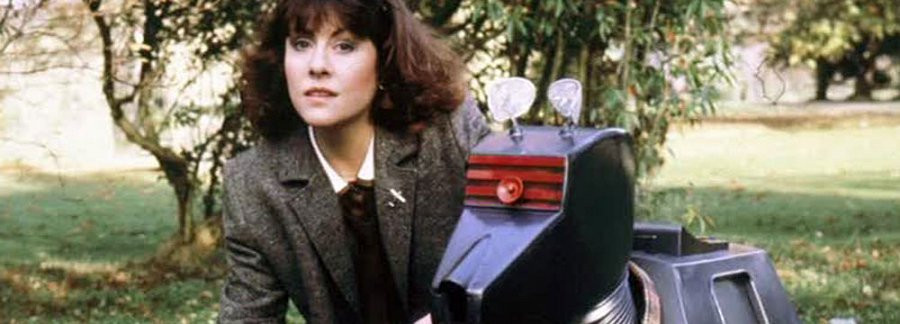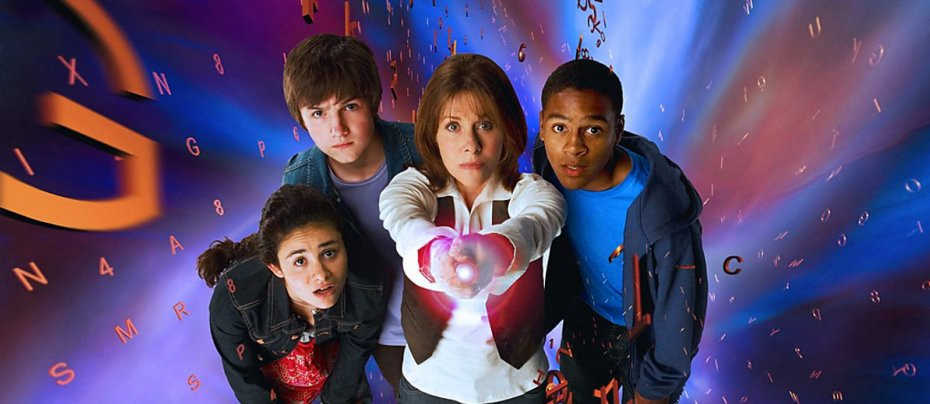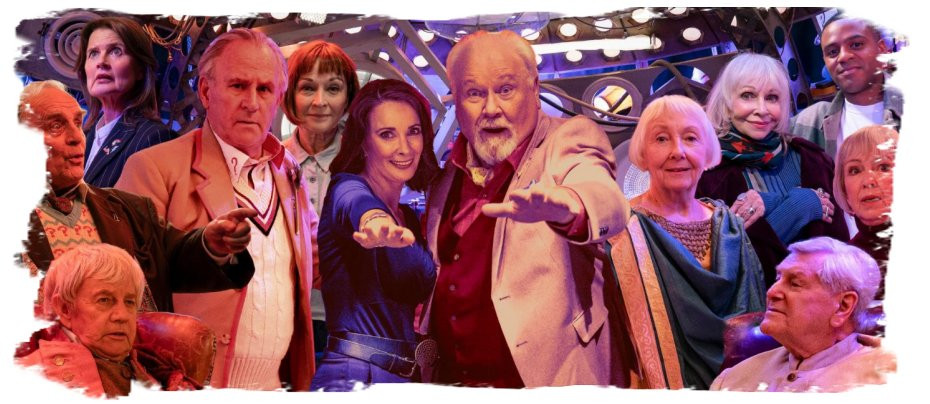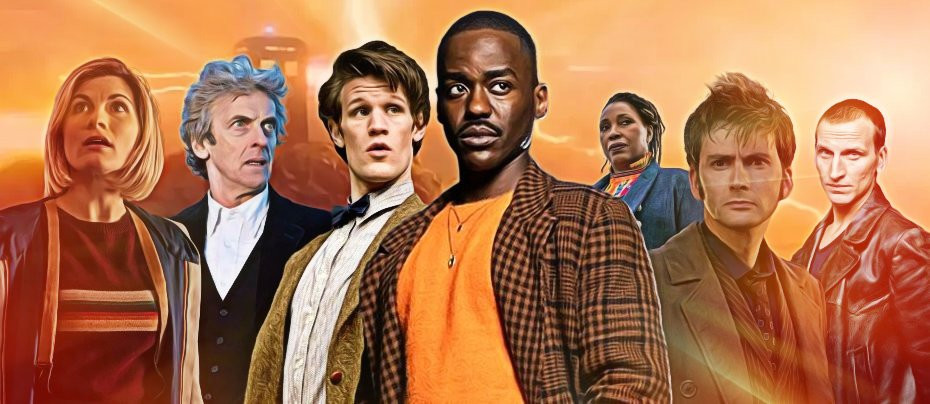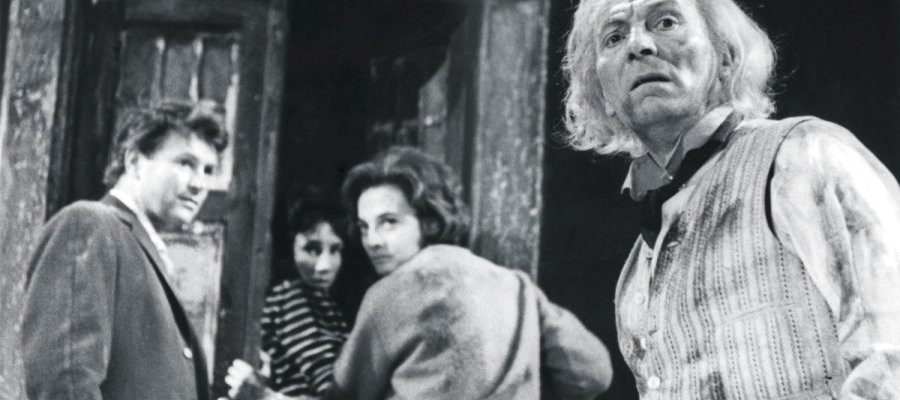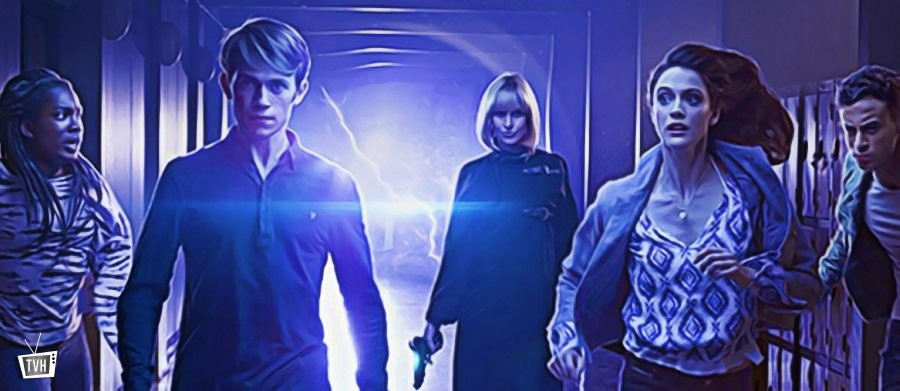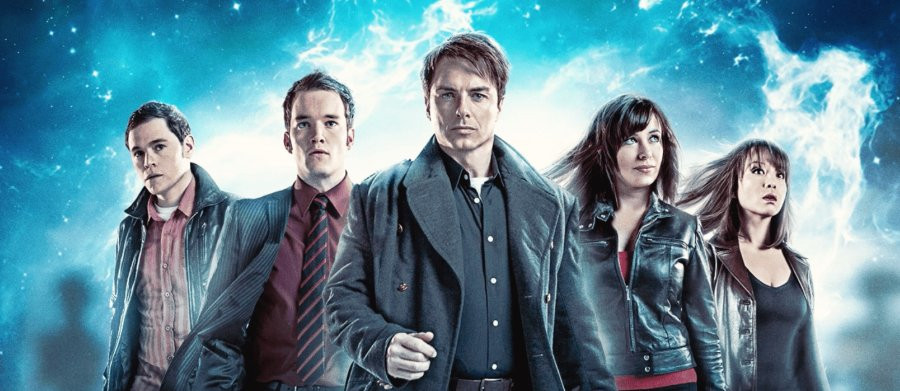Vengeance on Varos
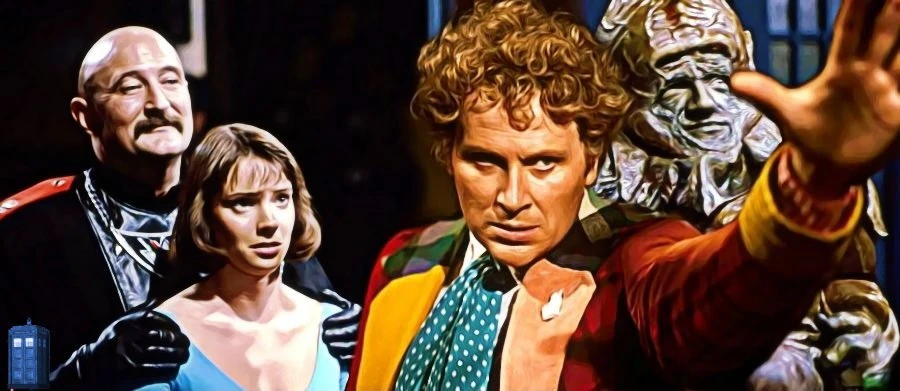
Reality TV and talent shows have become one of the dominant forms of broadcast entertainment of the twenty-first century. Yet in the twentieth, science fiction writers were already exploring the concept as a nightmarish vision of the future. In the 1980s, Doctor Who provided two very different serials, which in their own ways were disturbingly prescient.
Vengeance on Varos was the second serial of Doctor Who's twenty-second season, broadcast as two forty-five-minute episodes in 1985. While this is pretty much standard for genre television today, forty-five-minute episodes were an experiment for classic Doctor Who and wasn't repeated after this season. It was written by Philip Martin who had achieved some notoriety in television circles for his experimental and postmodern crime series Gangsters from 1976 to '78. This began as a fairly straightforward crime drama before Martin began to play with the structure of the scripts and had them comment on their medium – characters referencing the writers, walking off set in protest, that sort of thing. This wasn't entirely unheard of – sketch comedies such as Monty Python's Flying Circus and Q5 had been doing similar things for years – but passing this into more-or-less mainstream drama was cutting edge.
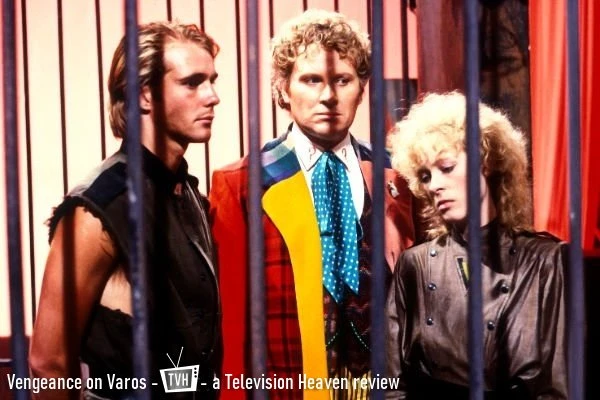
So it's no surprise that Martin, when approached to write for Doctor Who, decided to use the science fiction trappings to explore crime, punishment, and the medium of television itself. During the gestation of the scripts, Peter Davison had been replaced by Colin Baker, and the series had moved further into a rather gruesome period of heightened violence and horror. While many fans would say this went too far, and television critics frequently did, this atmosphere suited Martin's story perfectly. The central concept of Vengeance on Varos is simple. The planet Varos, in the twenty-third century, is a former prison colony where the descendants of the original prisoners are the plebs and those from the families of governors and guards still rule. Varos is a real pit of a planet and has only two exports: Zeiton-7, an ore used as fuel for space travel, and videos of events in the Punishment Dome. Here, dissidents are tortured and executed, their last moments broadcast and recorded for the entertainment of the downtrodden populace.
Much of the basis for the story is in the very Eighties phenomenon of video nasties: cheaply marketed video cassettes of horror and exploitation films, published before strict certifications were required for home video. Some of these were genuinely nasty, the sorts of things that would struggle to get a certified rating and release even today, but most were low-budget shockers that have since been released more legitimately. Mary Whitehouse and the National Viewers and Listeners Association, which by this time had moved on from trying to get Doctor Who cut down and onto the horror of home video, popularised the term, and successfully campaigned to ban many titles. Of course, the notoriety around such films made them all the more desirable to those who wanted to watch them.
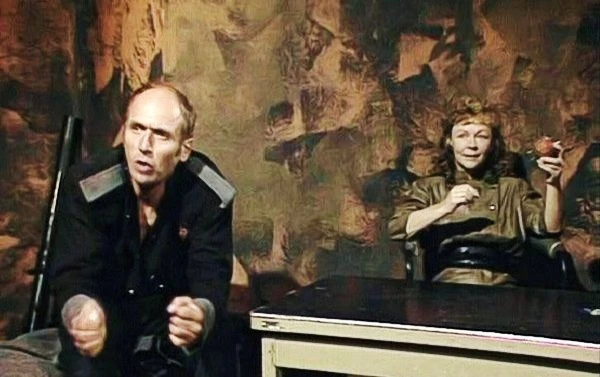
However, the scripts are very prescient, for while the Varosian authorities package their footage of executions and sell them to the galaxy at large, their main purpose is to keep the people distracted and entertained, focusing more on the grim spectacle in front of them than the realities of their situation. Vengeance on Varos' runtime is interspersed with scenes featuring a Varosian couple, who watch the events in the Punishment Dome, commenting on the same events that the viewers are watching themselves. As Etta (Sheila Reid – Benidorm, Brazil) cheers on “the one in the funny clothes” and her labourer husband Arak (Stephen Yardley – Z-Cars, The XYY Man, Howard's Way) moans that the broadcasts aren't as entertaining as they used to be. While we're certainly not at the stage where executions and torture are broadcast to the public, it's not hard to extrapolate from Bush Tucker Trials in I'm a Celebrity, Get Me Out of Here! or the sensationalised court cases of Judge Judy to the torments and trials watched dispassionately by Arak and Etta.
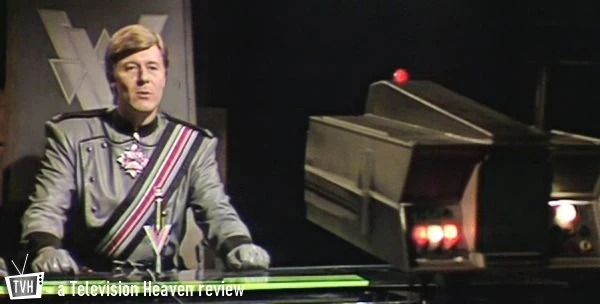
The couple's scenes are entirely separate from the main storyline, acting as a sort of Greek chorus, commenting on the main action, yet they serve to illustrate the harsh reality of Varos' civilisation. Their only direct influence on the main story is the viewer's votes. These days we have sundry reality talent shows in which contestants' fates are decided by public vote, and political debate is more televised than ever. It's not a stretch to imagine a future where we vote on laws and ministerial elections with the push of a remote-control button (or, more likely in our world, the touch of an app). Hopefully, we'll never get to the stage that we see on Varos, though. The Governor of the planet, played with commendable subtlety and sympathy by Martin Jarvis (known from guest roles on so much television and radio it's hard to list, but best known as P.G. Wodehouse's Jeeves on stage and radio) faces the threat of death every time his decisions are put to a public vote. Enough “no” votes, and he is bombarded by devastating rays, enough of which will kill him.
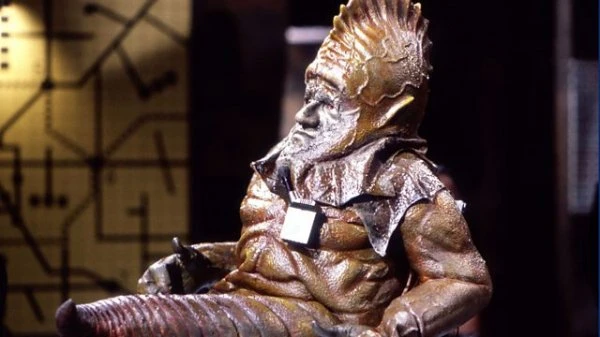
Worse still, the Governor has little real power and is left in an impossible situation. His main duties are dealing with the rebel factions who seek to overthrow the ruling class, and in negotiating trade with Varos' galactic neighbours. He is in an ongoing battle of wills with Sil, the representative of the Galatron Mining Corporation, who is tasked with bringing down the cost of Zeiton ore. Sil, is portrayed with relish by Nabil Shaban (City of Joy, Children of Men). The Jordanian actor, suffering from brittle bone disease, is of distinctly short stature, and able to play an alien creature without the ordinary, run-of-the-mill human silhouette. Sil is a semi-reptilian, amphibious creature with scaly flesh and fins, who eats marsh minnows and demands constant hydration from his statuesque lackies. He is seemingly in cahoots with the Chief Officer (Forbes Collins – Maid Marian and Her Merry Men), a camp but ruthless opportunist, who manipulates events to lead the Governor to imperil his position further.
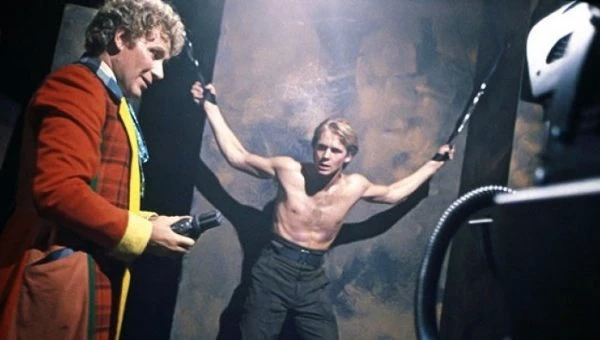
While the Governor is one of the most sympathetic characters in the serial, he's hardly a clean-cut goodie. When the Doctor and Peri (Nicola Bryant) arrive on Varos in search of some Zeiton-7 to power the ailing TARDIS, they are immediately drawn into the plight of the rebels. They stumble straight into the painful execution of the rebel Jondar (Jason Connery, Robin of Sherwood) as ordered and broadcast by the Governor. The Doctor frees Jondar (killing his guard in the process), never considering that perhaps the man might actually be guilty of something genuinely heinous. Before long, they're united with Jondar's partner Areta (Geraldine Alexander) and attempt to overthrow the corrupt regime. This leads them in a gruelling journey through the Punishment Dome, facing both real and illusory dangers, all the while watched by the Governor, Chief Officer and Sil, Arak and Etta, and viewers across Britain.
The serial puts the viewer, uncomfortably, in the same position as the unsavoury characters, watching as the heroes are attacked by cannibals, mutilated in the “transmogrifier” and tried to be hanged. The best moment is the cliffhanger to the first episode, where the Doctor, left dying from the effects of a simulated desert, collapses on the ground. “And cut it... there!” orders the Governor. Snap to closing credits.
Martin's script has an over-the-top style of dialogue, cod-Shakespearean in places, which suits Colin Baker's Doctor to a tee, although the supposedly modern American girl Peri doesn't do as well with it. It's a story that's terribly theatrical and looks dreadfully cheap in places, but it's played with conviction, and Baker's overtly theatrical performance as the Doctor supports rather than detracts from it. There's a darkly humorous undercurrent, which makes some of the violent sequences even more unsavoury. There's certainly nothing in here as nasty as the banned videos that helped inspire it, but it's strong stuff for ostensibly family viewing. While it gained some complaints from viewers, a softer approach wouldn't have worked in this story.
Sometimes that florid dialogue gets the better of the actors, who can't make it believable; Alexander is particularly bad as Areta, giving a clear “straight out of stage school” performance, but the more established Connery isn't much better. Far better are Forbes, Shaban and Nicholas Chagrin as the sadistic, Phantom-like Quillam. Also look out for an early role for a young Owen Teale, nowadays recognisable for Game of Thrones and Tolkien. Shaban would return as Sil the following year, on his own planet, as part of The Trial of a Time Lord, which continued to put the characters and audience in the same position; having a court of Time Lords sit down and watch the Doctor's adventures. Both Jarvis and Yardley had been on Doctor Who before: Jarvis in 1974's Invasion of the Dinosaurs and, unrecognisably, in 1965's The Web Planet, while Yardley had a small role in 1975's Genesis of the Daleks. Much later, Teale appeared in the first season of Torchwood (“Countrycide,” 2006), while Sheila Reid played Clara Oswald's gran in the revived Doctor Who, in The Time of the Doctor and Dark Water (2013 and '14 respectively).
The best material, though, goes to Arak and Etta, forever passing comment on the grim spectacle in front of them, and hinting at the wider picture in well-judged asides. In the end, of course, the Doctor and the rebels win. The Governor comes good, and, with the true value of Zeiton-7 revealed to him, is able to force Sil's hand and revitalise the economy of Varos, ending the corrupt regime. He ends his final broadcast with a message of hope, and the screens turn off. The final exchange is perfect:
“It's all changed. We're free.”
“What shall we do?”
“Dunno.”
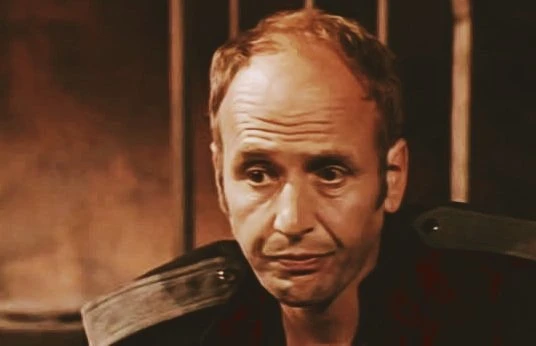
And so the story ends.
While, of course, everything in Vengeance on Varos is entirely fictitious and absurdly heightened, it's only a skip away from a world where people are humiliated live on television for the entertainment of the masses, and where a crook can go from reality TV to the presidency of the United States. Vengeance on Varos saw Doctor Who enter its twilight period, a time of dropping ratings and behind-the-scenes tumult. Still, its influence can be felt on the modern series, with Steven Moffat (showrunner from 2010 to '17) rating it highly, and Russell T. Davies (showrunner from 2005 to '10) approaching some similar themes with his deadly game shows and reality TV in 2005's “Bad Wolf,” although his use of contemporary programmes in the story means that his episode is more dated than Varos, twenty years its senior. Before the original series was over, though, another serial would play with similar themes: 1988's The Greatest Show in the Galaxy.
Review by Daniel Tessier


